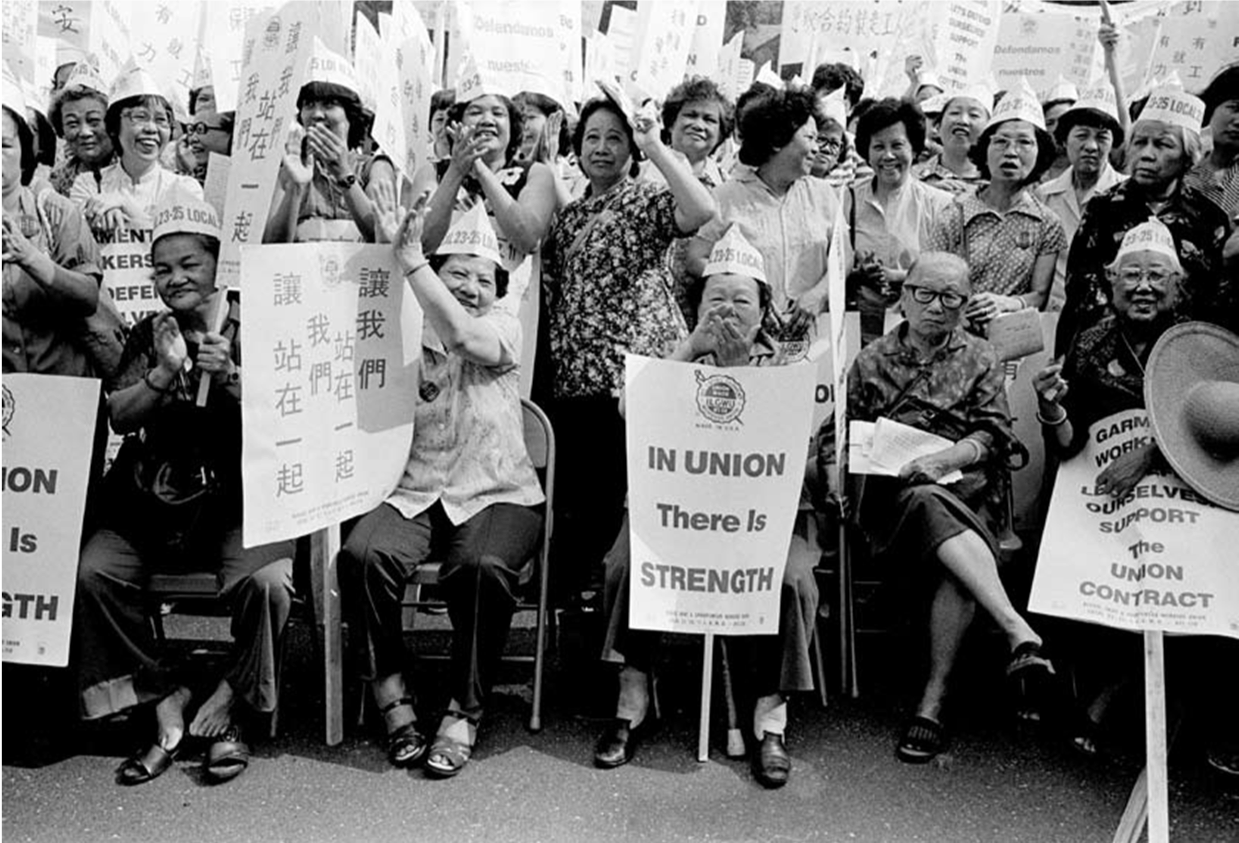Asian American women’s history has long been overshadowed, often relegated to the margins of broader historical narratives. This invisible past is now being brought to light through the innovative exhibition at the Schlesinger Library, which explores the rich yet underrepresented stories of Asian American women. Featuring artifacts that span over 150 years, including poignant photographs from the infamous 1904 St. Louis World’s Fair, the exhibit invites viewers to reevaluate the cultural significance of these often-forgotten histories. The collaboration between students and archivists not only highlights the struggles of these women but also showcases their resilience and contributions to American society. By illuminating the complexities of immigration history and the diverse experiences of Asian American women, the Schlesinger Library’s exhibition is a vital step towards acknowledging and celebrating these essential narratives that shape U.S. history.
The overlooked narratives of Asian American women provide a critical lens through which we can examine the broader context of their roles in American history. Often referred to as the unsung heroines of the immigrant experience, these women have faced unique challenges that deserve recognition and respect. Recent initiatives, such as the Schlesinger Library exhibit, aim to unearth these hidden stories and highlight the significance of Asian women in shaping America’s immigration narrative. With a focus on cultural heritage and their enduring legacies, the exhibition acts as a reminder of the need to document what many have considered forgotten histories. As we delve deeper into this multifaceted topic, we not only pay homage to these trailblazers but also enrich our understanding of the nation’s diverse past.
Unearthing Forgotten Histories of Asian American Women
The exhibition “Illuminate: Contextualizing Asian American Women’s Stories Through the Archives” at the Schlesinger Library sheds light on the often-overlooked narratives of Asian American women. By displaying artifacts and stories spanning over a century and a half, the exhibit emphasizes the cultural significance of these women’s experiences and contributions to American history. As curator Victor Betts notes, Asian American women’s history has frequently been pushed to the margins, creating a gap in our collective understanding of immigration history and societal progression.
Included in the exhibition are the poignant stories of Ainu and Visayan women, whose experiences at the 1904 World’s Fair serve as a critical reflection of how these women were perceived and represented in society. Their names may have faded into obscurity, but their stories, showcased through the lens of American photojournalism, highlight the intersection of race, gender, and cultural curiosity that has often defined the portrayal of Asian American women throughout history.
The Schlesinger Library Exhibit: A New Lens on History
Schlesinger Library’s recent exhibit allows students and viewers to engage with Asian American history in ways that have not been fully explored before. By inviting students to participate in the creation of this exhibition, the library encourages a collaborative approach to uncovering the suppressed stories of Asian American women. This model of co-teaching not only promotes research and learning but also fosters a deeper appreciation for the roles these women have played, often without recognition, in shaping American culture.
The exhibit’s focus on archival materials provides a rich context for understanding how these women’s narratives have been marginalized. With contributions from active student research, it reveals a continuous thread of activism and resilience found in the stories of women like Ah Fong, who fought legal battles that contributed to landmark immigration rulings. Such reflections prompt viewers to reconsider the narratives surrounding Asian American women and recognize their invaluable roles in American history.
Cultural Significance of Archival Research in Asian American Studies
The meticulous work of archivists, as highlighted in the Schlesinger exhibit, emphasizes the importance of saving and sharing the cultural records of Asian American women, who have historically been left out of the narrative. The mixture of photographs, political material, and personal stories complement each other in their representation of the struggles and achievements of these women. This archival research serves not just as a preservation effort but also as a pathway for others to learn about the rich, yet often forgotten histories that are integral to understanding America’s diverse cultural landscape.
As students delve into the archives, they unveil stories that connect past injustices with contemporary struggles faced by Asian American women, such as discrimination and violence exacerbated by the COVID-19 pandemic. By contextualizing these histories within the larger frameworks of American history, it becomes evident that the stories and experiences of Asian American women are critical to comprehending the broader narrative of racial and ethnic relations in the United States.
Asian American Women: From Objects of Study to Voices of Empowerment
The Schlesinger Library exhibit poignantly showcases the evolution of representation for Asian American women—from being perceived as mere subjects of curiosity to reclaiming their narratives as empowered voices. The transformation of historical accounts from the lens of colonial hierarchies to that of cultural pride highlights how these women have actively engaged in telling their own stories. The inclusion of contemporary figures, such as Grace Zia Chu and Madhur Jaffrey, illustrates that modern Asian American women have shifted the narrative, allowing their experiences to reflect agency and autonomy.
This shift is crucial in understanding the dynamic of cultural representation. As students reflect on past injustices, they also celebrate the achievements that Asian American women have made across various fields. By valuing their contributions, the exhibit fosters a recognition of the diverse experiences of Asian American women, creating a space for their stories to resonate within the larger American historical framework.
The Role of Education in Preserving Asian American Histories
Education plays a pivotal role in preserving the histories of marginalized communities, particularly for Asian American women who have been historically overlooked. The collaboration between scholars and students in the creation of the Schlesinger exhibit exemplifies how educational institutions can be platforms for change. By engaging learners with the archives, educators can instill a sense of ownership over these narratives, encouraging further exploration and representation of Asian American women’s stories.
Through curated courses like “Asian American Women’s History in the Schlesinger Library,” students gain invaluable insights into the complexities of immigration history and cultural identity. This educational approach not only enriches the participants’ understanding of their heritage but also empowers them to advocate for the recognition of Asian American women’s contributions. As they uncover forgotten histories, these students contribute to a broader movement that seeks to elevate the stories of those who have been silenced.
Art and Activism: The Influence of Asian American Women Artists
The intersection of art and activism is brilliantly captured in the work commissioned for the Schlesinger Library exhibit, illustrating how artistic expression can reflect and amplify the narratives of Asian American women. Artists like Shaina Lu use their platforms to highlight the injustices faced by their communities while promoting cultural pride and awareness. Such initiatives not only serve to beautify the exhibit but also invite viewers to engage emotionally and critically with the histories being presented.
Through artistic endeavors, Asian American women have often led movements for social change, creating visual dialogues that resonate across generations. The incorporation of diverse art forms—ranging from comic books to zines—into the exhibit showcases the varied ways these women convey their experiences, struggles, and victories. This artistic representation is vital in shaping public awareness and fostering solidarity, emphasizing that the stories of Asian American women continue to inspire and mobilize efforts toward equity and justice.
Emerging Scholarship in Asian American Women’s Studies
The exhibit underscores the importance of emerging scholarship within Asian American women’s studies, as it seeks innovative ways to recover and highlight forgotten histories. This scholarship is not just academic in nature; it is deeply intertwined with contemporary issues facing Asian American communities today. Scholars and students are increasingly looking at historical documents with fresh perspectives, drawing connections between past experiences and current societal challenges.
As new research emerges, it fosters a nuanced understanding of the interplay between identity, culture, and policy in shaping Asian American women’s experiences. This evolving scholarship not only enriches the academic discourse but also transforms how these narratives are presented in public history. By prioritizing the voices of those historically marginalized, scholars contribute to a more inclusive and comprehensive understanding of American history.
Rediscovering Legacy Through Community Engagement
Community engagement is essential in rediscovering the legacies of Asian American women, especially as institutions like the Schlesinger Library strive to include more voices in their collections. By fostering partnerships with local communities and organizations, libraries and archives can better serve as hubs for cultural preservation and understanding. This approach encourages not only the sharing of stories but also supports the active involvement of individuals who wish to contribute to their history.
As individuals participate in community-based projects and exhibitions, they contribute to the cultivation of a collective memory that honors the experiences of Asian American women. This process of engagement leads to a deeper appreciation of the variety of histories represented and promotes healing through storytelling. By reclaiming their narratives, these women not only honor their own pasts but also inspire future generations to understand the interconnectedness of their histories.
Concluding Thoughts: The Future of Asian American Women’s History
The ongoing efforts to illuminate Asian American women’s history through exhibitions like those at the Schlesinger Library leave a lasting impact on how society views this demographic. As institutions continue to prioritize the inclusion and recognition of these narratives, it opens the door for important discussions surrounding racial equality and social justice. Understanding that Asian American history is integral to the larger American story reinforces the need for collective acknowledgment of all facets of the nation’s past.
The future of Asian American women’s history depends on the sustained efforts of scholars, students, artists, and communities dedicated to unveiling and honoring these narratives. By actively engaging with the past and fostering dialogue around the experiences of Asian American women, we can forge a more inclusive and comprehensive understanding of history, paving the way for further exploration and representation in years to come.
Frequently Asked Questions
What is the significance of the Schlesinger Library exhibit on Asian American women’s history?
The Schlesinger Library’s exhibit, titled “Illuminate: Contextualizing Asian American Women’s Stories Through the Archives,” highlights the often overlooked narratives of Asian American women over 150 years. By showcasing forgotten histories and artifacts, this exhibition sheds light on their cultural significance and the broader immigration history related to Asian American women.
How does the Schlesinger Library exhibit address the concept of forgotten histories in Asian American women’s history?
The exhibit addresses forgotten histories in Asian American women’s history by rediscovering and presenting materials that reflect their roles and contributions, often marginalized in traditional historical narratives. Through photographs, political posters, and personal stories, it emphasizes the need to recognize Asian American women’s impact on American society.
What types of artifacts are included in the Asian American women’s history exhibit at Schlesinger Library?
The exhibit includes a range of artifacts such as photographs of Ainu and Visayan women from the 1904 St. Louis World’s Fair, political posters, comic books, and zines. These items serve as powerful reminders of the cultural significance and diverse experiences of Asian American women throughout history.
Why is the Schlesinger Library’s exhibit on Asian American women’s history relevant today?
The relevance of the Schlesinger Library’s exhibit today lies in its exploration of ongoing issues such as anti-Asian violence and the historical neglect of Asian American women’s stories. It invites contemporary audiences to reflect on how these narratives shape our understanding of both Asian American history and U.S. history as a whole.
Who helped develop the Schlesinger Library exhibit focusing on Asian American women’s history?
The exhibit was developed through collaboration between students and archivists, co-taught by Victor Betts and Erika Lee, who engaged students in researching archival materials related to Asian American women’s history. Their efforts illustrate how educational institutions can foster a deeper understanding of marginalized histories.
What legal actions were taken by Asian American women in history that are highlighted in the Schlesinger Library exhibit?
The exhibit highlights the significant legal actions of Asian American women, particularly focusing on the 1874 case of Ah Fong, a Chinese woman who, along with others, filed writs of habeas corpus. This case contributed to landmark Supreme Court rulings regarding immigration laws and exemplifies the legal efforts of Asian American women in advocating for their rights.
How does the artwork in the Schlesinger Library exhibit complement Asian American women’s history?
Artist Shaina Lu’s artwork complements the Asian American women’s history exhibit by providing a visual narrative that enhances the archival materials. Her translucent illustrations allow natural light to filter in, symbolizing the illumination of these often unseen histories, thus bridging the gap between the past and present.
What does the Schlesinger Library exhibit suggest about the role of Asian American women in shaping American history?
The exhibit suggests that Asian American women have played a crucial role in shaping American history, often overlooked in traditional narratives. It highlights their leadership in activism and social justice movements, asserting that understanding their contributions is essential for a comprehensive view of U.S. history.
How long will the Asian American women’s history exhibition be on display at the Schlesinger Library?
“Illuminate: Contextualizing Asian American Women’s Stories Through the Archives” will be on display at the Schlesinger Library until January 23.
| Key Points |
|---|
| The Schlesinger Library exhibition shines a light on the often overlooked contributions and stories of Asian American women throughout history. |
| Artifacts include photographs of Ainu and Visayan women displayed at the 1904 St. Louis World’s Fair, highlighting their historically marginalized narratives. |
| The exhibit aims to challenge viewers to reconsider perceptions of Asian American women’s roles in history, created alongside an undergraduate course on Asian American Women’s History. |
| The exhibition spans 150 years of history, addressing themes of erasure, hypervisibility, and the colonial context of Asian American women’s representations. |
| Contributors like Grace Zia Chu and Madhur Jaffrey provide contemporary narratives, contrasting with the erasure of earlier generations of Asian American women. |
| The show includes diverse artifacts: photos, political posters, and zines, contextualizing Asian American women’s experiences within broader historical frameworks. |
| Victor Betts and the students involved are pushing for greater recognition and expansion of collections relating to Asian American women’s history. |
| The exhibit encourages reflection on the marginalization of Asian American women’s stories and its implications for understanding American history as a whole. |
Summary
Asian American women’s history is a vital, yet often overlooked, part of the broader narrative of American history. The recent exhibition at the Schlesinger Library emphasizes the important contributions and stories of Asian American women, showcasing artifacts that span a century and a half. Through collaborative efforts between students and archivists, this exhibition sheds light on the historical marginalization these women faced, while promoting a deeper understanding of their dynamic roles in shaping the cultural and social landscape of America. As we seek to illuminate these vital stories, it becomes clear that Asian American women’s history not only enriches our understanding of the past but also challenges us to reshape the future narratives of America.


